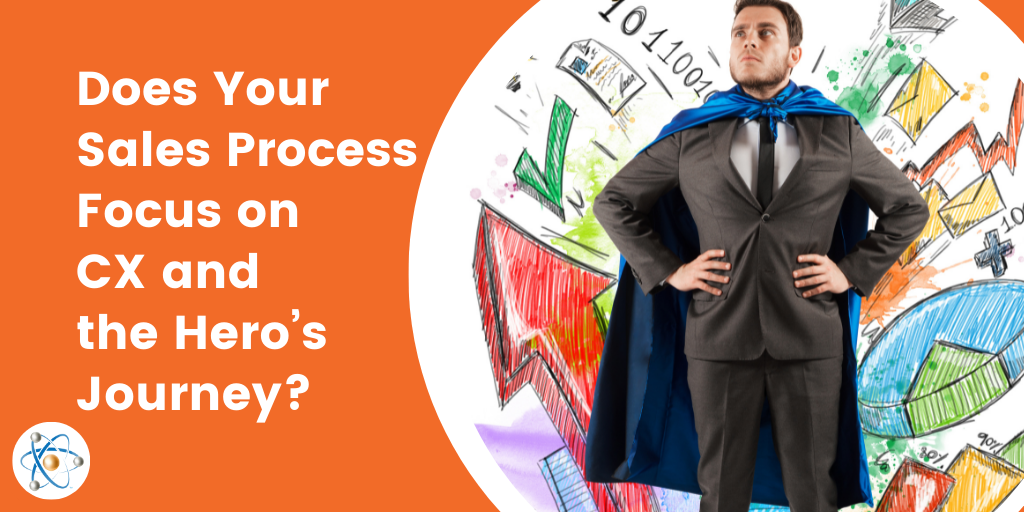
Did you know that a well-done consultative sales process mirrors the myths and legends that human beings have told each other for millennia? While at first, that sounds a little far-fetched, stay with me here as we show how, since the dawn of man, the tales we’ve told and the heroes we’ve come to love, inform and frame our worldview.
The legends of King Arthur, The Odyssey, Robin Hood, The Lord of the Rings, Star Wars, and Harry Potter are the same story told again and again. These myths and their archetypes drive our behavior more than most of us consciously perceive. We follow and relate to the hero’s journey of perseverance in the face of odds, searching for answers, decision making, loyalty, nurturance, and trust, until it all culminates in success.
So, you may be asking, “What does all this have to do with the customer experience and sales process?"
The Consultative Sales Process as it Relates to the Customer Journey
We are each the hero of our own story. We seek to further our quest for success, whether that is for personal greatness, career achievement, money, recognition, or something immediate and tangible, like finding a product to increase business efficiency. No matter the quest, we respond best to a consultative, solution-based approach … which takes us to the consultative sales process and the hero-customer journey.
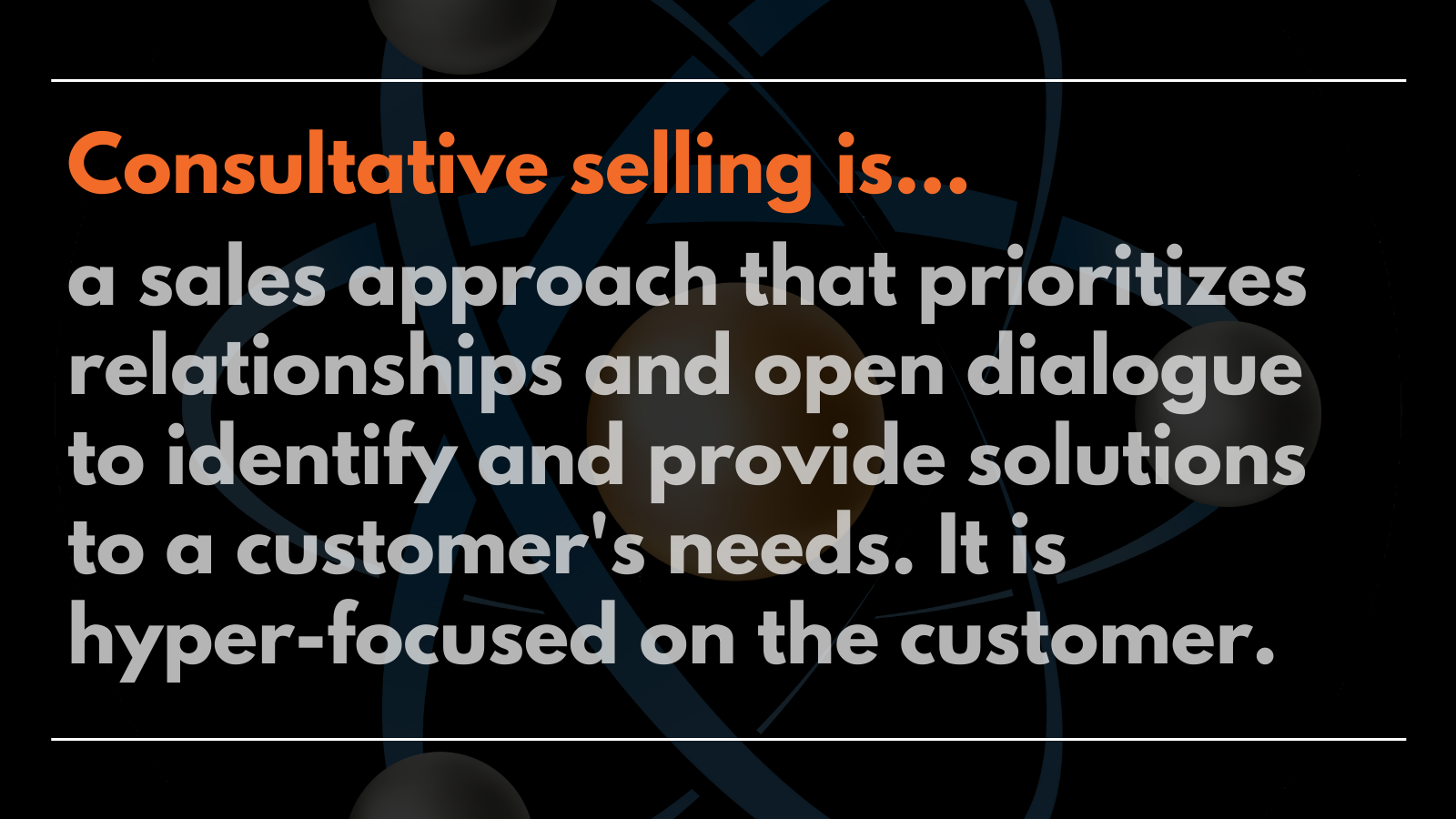
Unfortunately, sales organizations too often position themselves as the hero savior. Companies fall into the trap of sending the message that they will achieve success for their prospects and clients with their greatness. But this is not the mindset of the client.
Your prospects and customers want to be heroes on their problem-solving journeys. If your sales team or company is also positioned as a hero coming to save the day, then you are competing, not supporting.
The goal is to support prospects and customers through the seven stages of the buyer journey by being a consultant, an advisor, a partner. When you put your customers first, the result will not only be sales conversion but customer advocacy.
"In a recent study posted by our HubSpot partner, "the use of collaborative words had a positive impact on sales calls and using 'we' instead of 'I' increased success rates by 35%."
What’s the Difference Between Customer-focused & Sales-focused Selling? In the End, It’s Still Sales.
Consultative selling with a true customer focus is the basis for creating value and trust. Your team can and should help prospects and clients identify their business issues/pain points, offer the best solutions for their goals, follow through with promises made, and follow up to deepen the relationship. When your sales team is customer-focused and stops trying to hurry up and get the sale, it all falls into place. The sale is more likely to happen naturally.
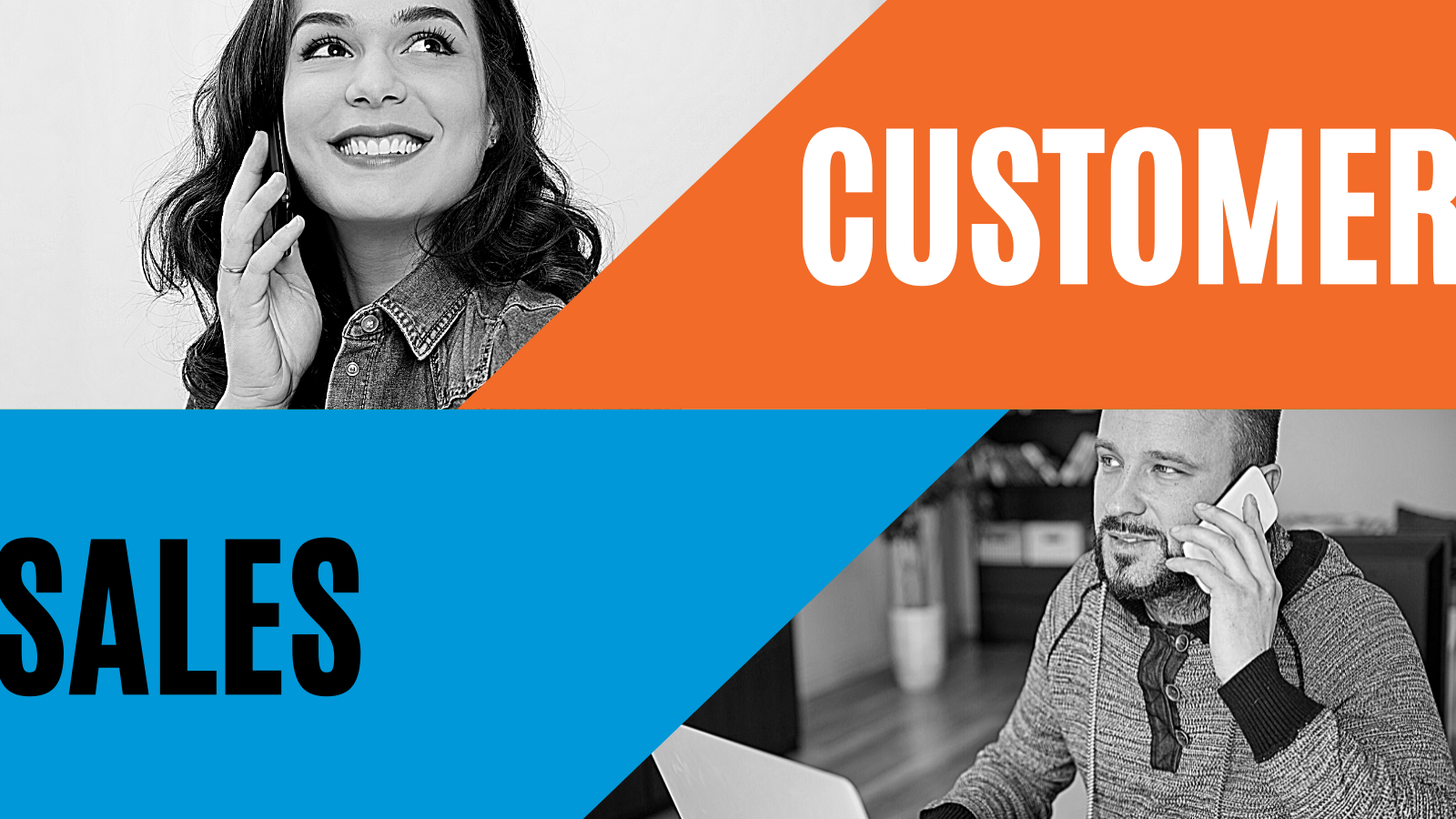
Customer-focused
Put yourself in a buying position. You’re looking to purchase a pallet of products that will increase your business’s production, thereby increasing revenue. But you need more specifics.
Are you going to respond positively to a company or salesperson who listens and empathizes with what you’re saying and recognizes your need? One who asks questions and focuses on you to solve that need in the most effective manner. An advisor who makes you feel part of the brand’s story, answers your questions with confidence, and closes by offering friendly assistance and a reliable sales experience? I hope your answer is “yes!”
In this case, the customer is the hero. This salesperson has set you up to succeed.
Sales-focused
Now take the other scenario, which is more the rule than the exception.
You contact a salesperson who claims to be able to help you. The salesperson doesn’t ask questions, just launches into how great the company is, how great their people are, how great their products are, and how they win all kinds of awards. Somewhere in the middle, he or she might touch on your pain point or talk about that product you’re interested in. Maybe you stay on the phone because you really need what this company offers, and the price is good. Except you’re left hanging without a clear call to action or a straightforward way to place an order. The process is confusing, and the salesperson isn’t as knowledgeable as you thought. You end up feeling frustrated.
Stating the obvious – this is not customer-focused! You’re not the hero of this story. You aren’t being nurtured. You are being sold, and quite poorly at that. Nobody likes to be sold.
The consultative salesperson or organization who acts as the experienced sage who knows and understands the path to success – the Merlin, Gandalf, Obi-Wan/Yoda, or Dumbledore – will be in step with prospects and customers. The consultative salesperson will walk them through the seven stages of the buyer journey with subtlety, as the trusted advisor and counselor.
Customer Experience is a Key Brand Differentiator & Critical to Growth
Studies continue to prove that customer experience is critical to growth. It takes precedence over price and product. It is a key brand differentiator. Customers have more choices than ever and have little to no tolerance for a bad experience. In fact, according to PwC research, 80% of consumers say speed, convenience, knowledgeable help, and friendly service are the most important elements of a positive customer experience.
Another important number that also stands out is that 70% of a buyer’s journey happens before he or she ever talks to a salesperson. Buyers tend to trust online reviews more than what a salesperson says. Ouch! This means your salespeople must focus on understanding the customer, be trustworthy, and act as an advisor to seal the deal.
“When you focus on the right efforts to convert prospects into happy customers and add a little extra care to keep them happy, the results will be reflected in your revenue.” – Roger Bielicke, Executive Partner, Atomic Revenue
How Do You Make the Customer the Hero and Keep Your Revenue Operations Strategy Focused on Company Growth?
No matter what you sell or who you sell it to, when the consultative sales process is practiced and aligned with your company’s people, process, and data to support the hero’s journey – the buyer’s journey – business will thrive with customer advocacy.
Customer advocacy should be your company’s objective. It is the dénouement of the buyer’s journey, just as the resolution of the conflict is the hero’s objective.
In myths and legends, the hero, with help from his or her Gandalf, flourishes throughout the stages of the journey, seeking the reward of the right solution, and with his or her mentor, slays many dragons to end the journey with a new perspective. The hero, feeling he or she couldn’t have done it without Gandalf, offers glowing accolades and praise to the mentor who carried him or her throughout the journey.
Customer advocacy is when the customer (hero) is completely won over throughout the seven stages of the buyer’s journey. He or she feels nurtured by the salesperson or customer representative (mentor) and is so thrilled with the outcome that he or she tells others. This directly, positively impacts your revenue and keeps growth at the forefront without focusing on sales.
Happy customers who are the heroes of their stories become your sales team via word-of-mouth. If your business operates profitably and achieves customer advocacy, you’ll have the necessary foundation for sustainable growth through continuously optimized revenue operations.
7-Stage Buyer Journey
To make each customer the hero and stay focused on company growth, your organization will succeed with consultative selling through the following seven stages of the buyer journey.
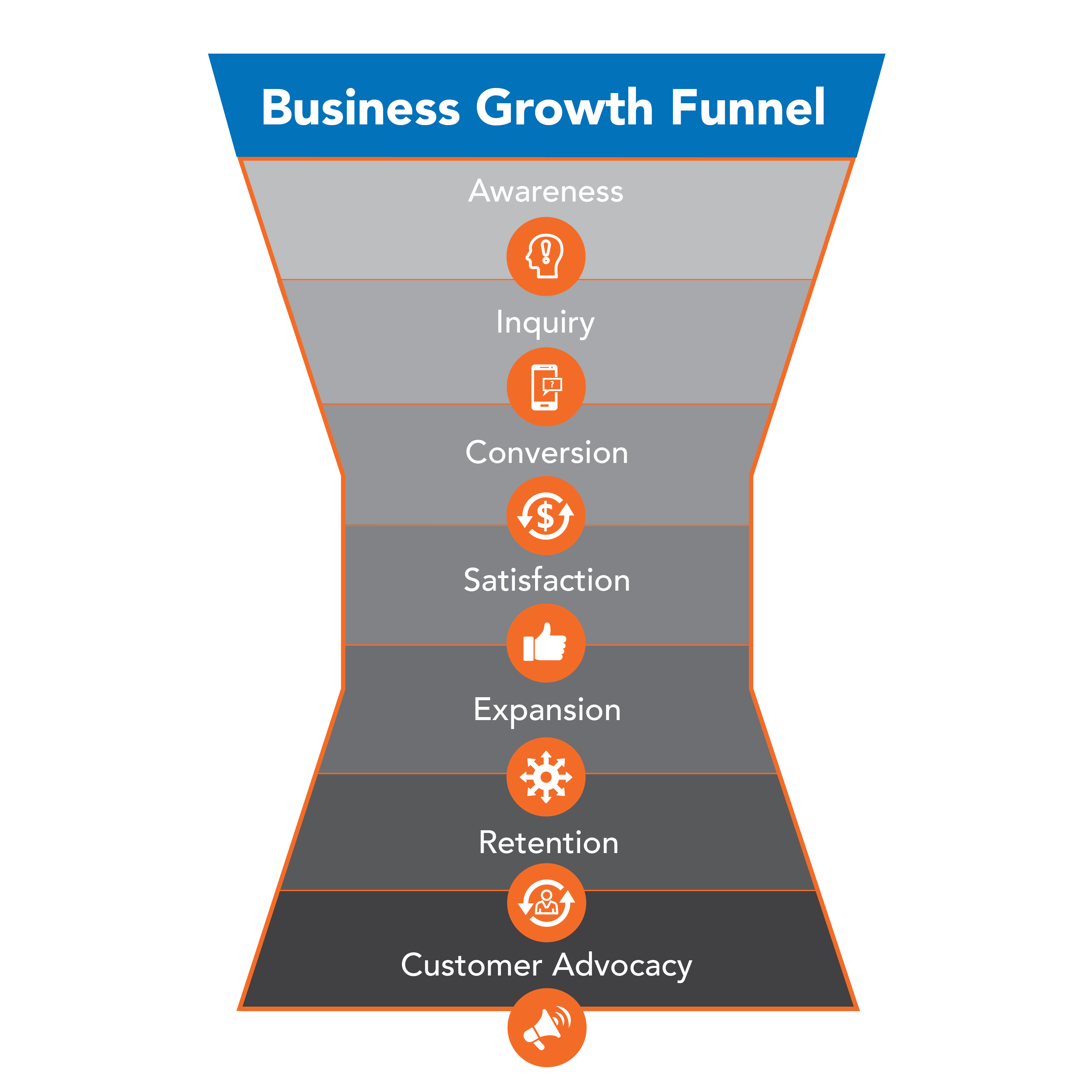
1. Awareness: hero has identified a problem and becomes aware of the need to explore options
A customer has identified what he or she needs and become aware of one or more of your solutions that fulfill those need(s).
2. Inquiry: hero furthers the quest for knowledge, takes up the call to adventure, meets his/her mentor.
If he or she is interested in learning more, that person will engage with your company to gather information and compare alternatives, thereby becoming a “lead” in your sales process. If this person feels educated and supported, conversion is right around the corner.
3. Conversion: hero examines the options, gathers advice, finds insight, and decides to move forward with a “life-altering” decision.
If the lead is satisfied so far, at this stage, he or she agrees to be further educated about exchanging money for the solution. If there is agreement that the value of the solution is worth the cost of purchase (time, resources, money, etc.) then the sale converts. You’ve made the customer a hero by solving known (and sometimes unknown) issues within his or her objectives.
4. Satisfaction: hero has acted, crossed the threshold of trust; now the mentor must deliver, slay doubts, and bring hero into the light.
Now you must deliver on the promises made in the Awareness, Inquiry, and Conversion stages of the buyer journey – give what’s expected for the dollars spent, and when possible, exceed the customer’s expectations.
5. Retention: hero must address the initial reticence from the first leg of the journey and trust again that he/she, with the mentor, can achieve success. Mentor guides hero through another stellar experience, a metaphorical rebirth.
If this customer comes back to buy again, repeat the first 4 steps in the process, even though he or she is not a new customer, these steps must be followed to get to retention. If each purchase is a good experience, then your customer will retain trust in the solutions that you offer.
6. Expansion: hero has slain the dragon, grown, and now trusts himself/herself and the mentor, continues to expand the journey with confidence.
If each experience has been consistently excellent, beyond trusting the product that your customer has already purchased, he or she will expand trust in your company, and buy more solutions to more problems.
7. Customer Advocacy: hero returns “home,” shares his/her experience with others; sticks by the mentor’s side as they travel the bumpy road of life
When your company has done everything right, and the whole experience through the first six stages of the buyer journey exceeded expectations, then your customer will most likely become an advocate. He or she will promote and sell your company to others. This is your company’s most valuable and cost-effective lead and the pinnacle of your revenue operations strategy.
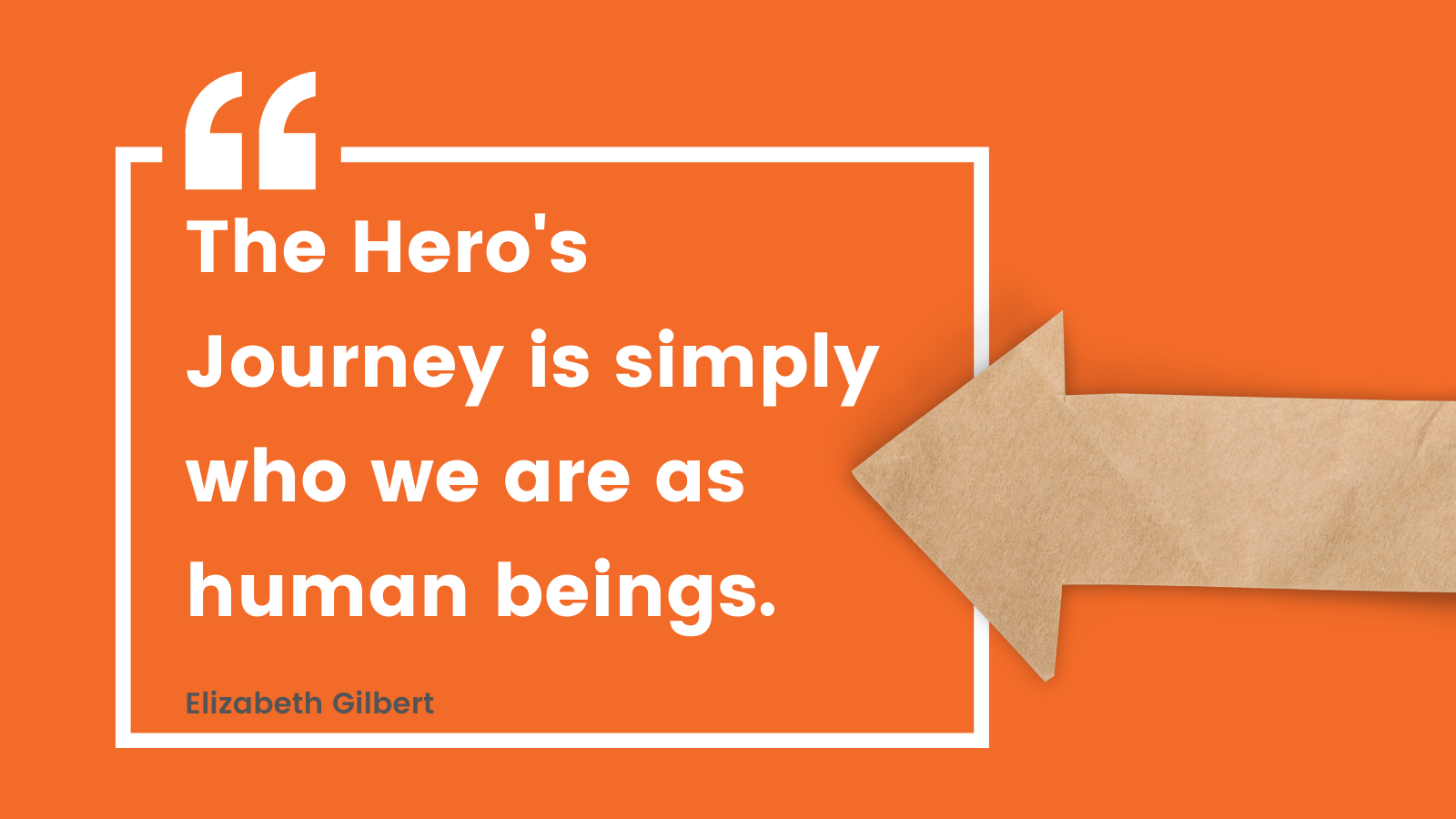
How Can Your Sales Team Adopt the Consultative-Selling Mindset and Find Time to be the Wise Advisor to so Many Customers and Prospects?
The only way to reach prospects and customers consistently during each step of the buyer journey without physically having to call or contact them is to utilize technology and create a customer-focused, data-driven strategy using the following:
- Digital operations – you must have a highly functional website that provides analytics and use other digital sources that make sense for your target audience. Social media and email, blogs, whitepapers, subject matter expert (SME) content, digital sales support, digital marketing, and digital advocacy.
- A CRM tool that is easy to use so it actually gets used by your sales team and other employees.
- Meaningful, real-time KPI tracking that allows for dynamic changes in your lead generation and sales conversion processes.
- A data dashboard that offers at-a-glance insight into customer marketing and sales outreach for strategy modifications.
- Consultative sales training with a focus on nurturing customers through the buying journey (using tools, technology, and personal attention) to get to customer advocacy.
Whether your B2B company has gone primarily to online sales or you’re using customer representatives, buyers are people who want to be educated and communicated within a personable, non-salesy way. Pushy, flashy, braggadocious digital or personal interactions will get very few leads to convert, and many to disengage before they ever get to stage two of the buyer journey.
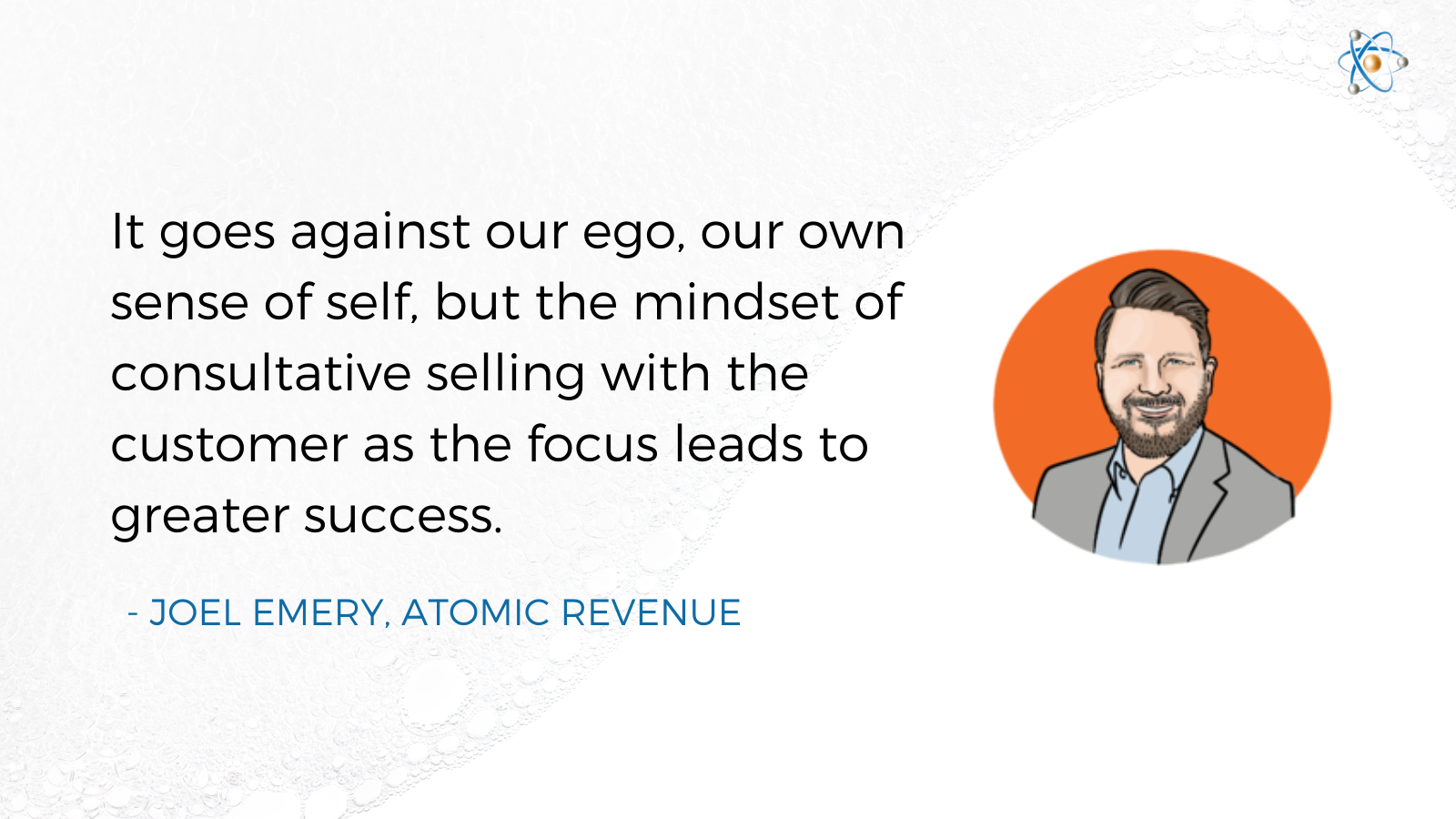
Make Each Prospect & Customer the Hero of the Buying Journey, Watch Sales Grow
If you want more sales, make each prospect and customer the hero of his or her buying journey. Prioritize the relationship, connect and empathize, identify and provide solutions to known and unknown business needs, and always remain focused on them versus on your company and/or the products being sold.
In Harry Potter, Dumbledore continually provides insight and direction to Harry, but the room to succeed is left to Harry’s hero’s journey. Your clients are the heroes – it’s up to you to work your magic to help each of them succeed.
If you would like an objective perspective on your sales process, Atomic Revenue is here to help! Our approach focuses on a customer experience and buyer journey that bring in quality leads who can actually buy what you sell and make them so happy they tell others. Let’s chat!
 About the Author
About the Author
Joel Emery is a Sales Systems Architect at Atomic Revenue and principal of Ignite Strategies, LLC. Joel drives innovation and collaboration, thinks critically, and aligns diverse perspectives to expand revenue streams and achieve common goals. He is also an expert in quantitative and qualitative data collection and analysis. Joel’s effective strategies to engage customers and employees and increase revenue support Atomic Revenue’s mission and our clients in obtaining customer success and revenue growth.





